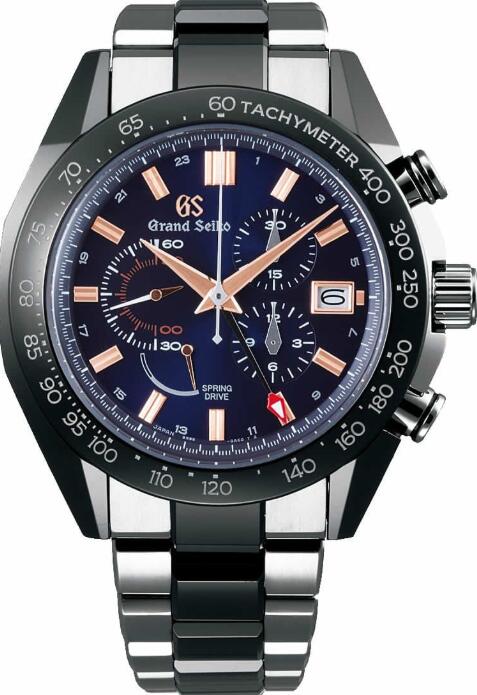In the past 20 years, the Grand Seiko Spring Drive movement has been incorporated into the ranks of watch collectors and enthusiasts. At this point, there are already countless words dedicated to the Spring Drive movement, but if you want to really explain the mechanism and the complete history in depth, then I suggest you read “The Amazing History & Functionality of the Seiko” spring drive “Core” and our exclusive interview with Seiko master watchmaker Mr. Nakazawa Yoshio. Grand Seiko also tells the story of Spring Drive in nine chapters.
The Spring Drive movement was the dream of Yoshikazu Akahane in the late 1970s, when he was still an engineer at Suwa Seikosha (later to become Seiko Epson). Akahane will work with contemporary people such as Osamu Takahashi and Kunio Koike for many years to execute the project. In fact, he has applied for a patent for it and described it as “the development of an electronically adjusted mechanical watch driven by a spring.”
Mr. Takahashi played a key role in the final iconic Spring Drive sweeping second hand. Koike played a large role in the design of low-voltage integrated circuit design, which helped solve the long-standing problem of reducing the power required by the movement. . Akabane, Takahashi and Koike are three groundbreaking characters. Their perseverance and unremitting dedication made Spring Drive a reality when it was first successfully used on a prototype on December 26, 1997. Sadly, Chi Yu disappeared from pneumonia in less than a year. August 1998.
Ironically, Spring Drive has been released for 20 years. Ironically, from the first patent in 1978 to the release of the movement in 1998, this is the same time. It has 600 patents and unlimited talent and creativity, creating the Spring Drive movement. Released as a manual winding movement in 1999, the first automatic Spring Drive will be available in 2005 a few years later.
To commemorate the 20th anniversary of Spring Drive, Grand Seiko released four new men watches as part of its Elegance collection. Since the 20th anniversary of the birth of Spring Drive, technically speaking, this is also the anniversary of the first manually wound Spring Drive. Therefore, Grand Seiko launched two new manual-winding Spring Drive movements for these four watch series. Even so, all four watches have the same minimal dial time dial layout. Well, almost the same layout. You will notice that the platinum version using the 9R02 movement has a small bellflower-shaped barrel. Bellflower is an ode to salt oji, where Seiko’s miniature artist’s studio is located. In addition, at 6 o’clock on the dial, you will see an eight-point asterisk, indicating that the hour markers are made of pure gold.
The new 9R02 movement is handmade by the most senior Seiko watchmaker in Micro Artist Studio, so it is not surprising that both watches equipped with this movement are made of platinum. In fact, 9R02 is very similar to Credor 7R14 in Eichi II, but has a longer power reserve.
The movement has the function of a “torque return system”, which essentially utilizes some of the energy released by a fully wound spring, which otherwise would be wasted. Activated 48 hours after the mainspring is fully tightened, the torque return system increases the power reserve of the movement. This resulted in the 9R02 having a power reserve of 84 hours with an accuracy of ±1 second per day/±15 seconds per month.
The model I can’t get the picture from is SBGZ001, which is made in a platinum case made by hand with the Grand Seiko “snowflake” pattern recognizable on the dial. SBGZ003 is another platinum case with the 9R02 movement Seiko Spring Drive 20th Anniversary watch, the two are the same size, respectively 38.5 mm wide and 9.8 mm thick.
The main difference between the two is the snowflake finish on the dial and case of SBGZ001, while SBGZ003 has a more traditional case and granular dial. The case sizes of SBGZ001 and SBGZ003 are the same, 38.5 mm wide and 9.8 mm thick, although the snowflake case SBGZ001 is limited to 30 pieces, while SBGZ003 is not restricted.
Now we have SBGY002 and SBGY003, which have the new Spring Drive movement 9R31. SBGY002 is the only gold model in the series. The limited edition of 700 pieces (SBGY003) is the most affordable watch in the group because it is made of stainless steel.
Relative to the two platinum watches, these two models represent the end of Grand Seiko’s vision of its Elegance Collection. SBGY002 is an “check all boxes” item, suitable for those who want a gold watch to declare it as a gold watch. I believe this is the first snowflake dial made by Grand Seiko in a gold case. I think the decision to use this vibrant gold for a case such as rose gold is wise and works. I think this version is especially popular for Seiko in Japan, and it is wise to use it as a non-limited version.

Now, SBGY003 steel is another matter. It is limited to 700 works with sunlight patterns, and attracts people’s attention through its meticulous and detailed execution. I know how coveted the snowflake dial has become (and for good reason), but I think I actually prefer this sun dial. I can’t help but think of the snowflake dial as Seiko’s right brain (creative, artistic, poetic), and the sunshine dial as Seiko’s left brain (logic, precise ordering, almost mathematically intentional). That is to say, the opinions I like may change according to the day I have experienced.
9R31 and 9R02 have the same dual mainspring architecture, with a daily accuracy of ±1 second, but different. The power reserve is shorter at 72 hours, and there is no torque return system or bellflower design on the barrel. Both the 9R02 and 9R31 movement dials have a power reserve indicator on the back.